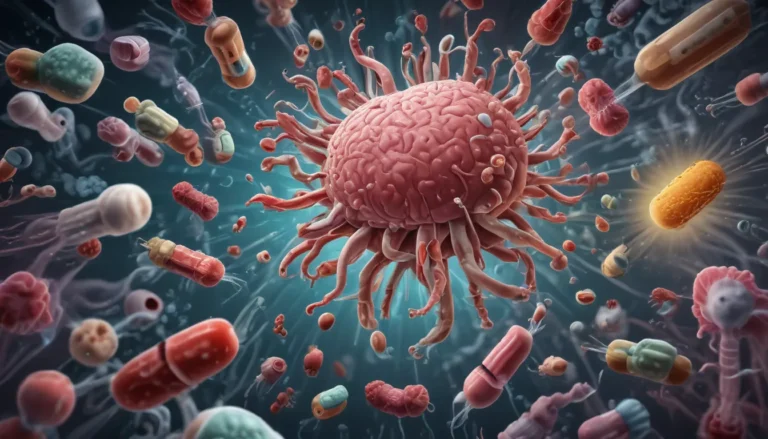A Note About Images: The images used in our articles are for illustration purposes only and may not exactly match the content. They are meant to engage readers, but the text should be relied upon for accurate information.
Welcome to the captivating realm of phosphorylation! As a fundamental biological process, phosphorylation plays a vital role in regulating various cellular functions. It involves the addition of a phosphate group to molecules, such as proteins, which can significantly impact their structure, activity, and interactions with other molecules. This article will delve into the enigmatic nature of phosphorylation and uncover 18 fascinating facts about this essential mechanism. Get ready to embark on a journey of discovery as we explore the mysteries behind phosphorylation and enhance your understanding of this critical biological process.
Unraveling the Essence of Phosphorylation
Phosphorylation constitutes a cornerstone in biological systems, influencing a wide array of cellular activities including signal transduction, protein regulation, and energy metabolism. This process entails the attachment of a phosphate group (-PO4) to a target molecule, typically a protein, lipid, or carbohydrate. Protein phosphorylation, characterized by the addition of phosphate groups to specific amino acid residues within a protein molecule, is the most common form of phosphorylation.
Phosphorylation acts as a molecular switch, modulating protein activity by altering their shape, stability, activity, and localization. This reversible process can switch proteins “on” or “off” by changing their conformation or interactions with other molecules. Significantly, phosphorylation is involved in cell signaling pathways, cell cycle regulation, gene expression, memory formation, and energy metabolism.
Exploring the Nuances of Phosphorylation Dynamics
Phosphorylation dynamics are regulated by a delicate balance between kinases, enzymes that add phosphate groups, and phosphatases, enzymes that remove them. This intricate process can be influenced by external signals, such as hormones and growth factors, leading to spatially and temporally regulated phosphorylation events. Scientists employ various techniques, including mass spectrometry and phosphoproteomics, to study and quantify phosphorylation patterns unique to specific cell types or disease states.
Dysregulation of phosphorylation processes can contribute to the development of diseases like cancer, neurodegenerative disorders, and metabolic disorders. Understanding and targeting aberrant phosphorylation holds promise for drug development, offering new avenues for developing targeted therapeutics. As researchers continue to delve into the world of phosphorylation, we anticipate uncovering more mysteries and unlocking new insights into the fascinating realm of cellular biology.
Answering Common Queries About Phosphorylation
-
What is phosphorylation?
Phosphorylation is a biological process involving the addition of a phosphate group to a molecule, typically a protein, regulating protein activity and cellular processes. -
How does phosphorylation regulate protein activity?
Phosphorylation alters the structure and function of proteins, activating or deactivating them and influencing their interactions with other molecules. -
What enzymes are involved in phosphorylation?
Protein kinases are responsible for adding phosphate groups to proteins during phosphorylation, transferring phosphate groups from ATP to target proteins. -
How does phosphorylation affect cellular signaling?
Acting as a molecular switch, phosphorylation regulates cellular signaling pathways, enabling cells to respond to external stimuli and coordinate complex processes. -
Can phosphorylation be reversed?
Yes, phosphorylation can be reversed through dephosphorylation, a process where protein phosphatases remove phosphate groups from phosphorylated proteins. -
Are there different types of phosphorylation?
Various types of phosphorylation exist, including serine, threonine, and tyrosine phosphorylation, each playing distinct regulatory roles in modulating protein function. -
Is phosphorylation involved in disease development?
Dysregulation of phosphorylation processes can contribute to diseases like cancer, diabetes, and neurological disorders, making it a target of interest for therapeutic interventions. -
Can phosphorylation be studied experimentally?
Researchers employ diverse experimental methods, such as mass spectrometry and phosphoproteomics, to study phosphorylation events, aiding in the identification of phosphorylated proteins. -
Are there any drugs targeting phosphorylation?
Several drugs have been developed to target specific protein kinases implicated in diseases like cancer, aiming to block abnormal phosphorylation and inhibit aberrant signaling pathways. -
How does phosphorylation affect cellular metabolism?
Phosphorylation influences metabolic enzymes and pathways, regulating processes like glucose metabolism, lipid synthesis, and energy production.
As we unravel the mysteries of phosphorylation, we uncover a world of intricate cellular processes and potential therapeutic opportunities. Dive into the fascinating realm of protein phosphorylation, where each fact illuminates the profound impact of this essential mechanism on biological systems. Explore the depths of phosphorylation research and witness the transformative power it holds for the future of medicine and biotechnology.






